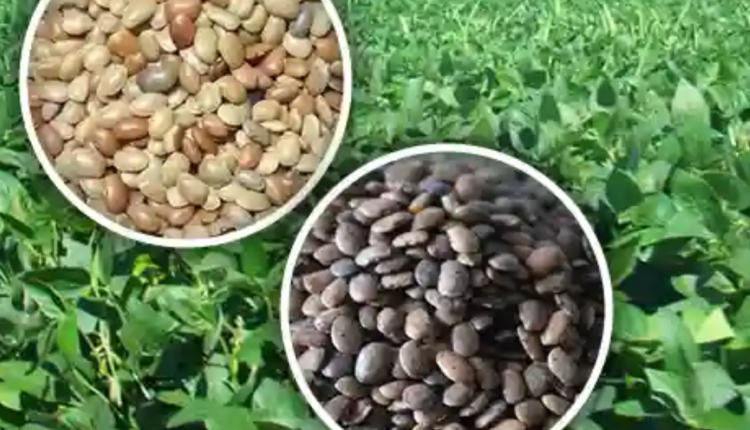Gahat is a very important pulse crop found in the hilly areas of Uttarakhand. It has medicinal properties and is also nutritious, so it is a good source of cheap and easily available protein for the villagers. Gahat is also known as horse gram or Kulthi, and it is widely used in food.
Gahat has been an important part of the diet since ancient times. Now its demand is increasing, due to which farmers are getting good prices for it and opportunities to sell it are also increasing rapidly. There is an old agricultural method in Uttarakhand, in which many crops are grown together. It is called ‘Baranaja’, and Gahat cultivation is an important part of this method. This method has been going on for centuries.
Cultivation and Production of Horse gram
Gahat is being cultivated in India since ancient times. It is grown not only in India but also in Australia, Malaysia, West Indies, Myanmar, East and South Africa. In India, horse gram is cultivated on about 4.58 lakh hectares of land, which produces 2.89 lakh tonnes of horse gram. An average of 659 kg of horse gram is produced in every hectare. Horse gram grains are light almond, black and brown in colour.
Gahat is cultivated on about 11,000 hectares of land in Uttarakhand, which produces 11,000 tonnes of horse gram. Here, an average of 10 quintals (1000 kg) of horse gram is produced in every hectare, which is much more than other states. Mostly poor farmers grow it for their own consumption and sell very little in the market.
Importance of Horse Gram Cultivation
Gahat cultivation is of special importance in organic farming in hilly areas. It makes the soil more fertile by taking nitrogen from the air. When the leaves of gahat rot, the amount of manure in the soil increases. The dry husk of gahat is very nutritious for milk-giving animals. Gahat is mostly grown up to an altitude of 1800 meters above sea level. In Uttarakhand, it is grown up to an altitude of 1200 meters. This crop grows well in areas with less rainfall, where water drains easily.
Nutritional and Medicinal Properties of Horse Gram Cultivation
Gahat seeds have very good nutritional and medicinal properties. Gahat has the same amount of protein as other pulses, but the amount of fiber, calcium, iron and molybdenum in it is more than other pulses of India. Usually, horse gram is eaten whole, which makes it great for eating with cereals.
Indian Ayurveda uses horse gram to treat a number of ailments. It helps dissolve kidney stones, a common problem among people living in hilly areas. Apart from this, it also helps in controlling stomach ulcers, acid reflux and diabetes. Horse gram seeds are high in fiber and warm the body, so it also helps in reducing obesity.
What is in horse gram (per 100 grams):
| Moisture | 9.28 grams |
| Protein | 21.73 grams |
| Minerals | 3.24 grams |
| Fat | 0.62 grams |
| Total fiber | 7.88 grams |
| Carbohydrates | 57.24 grams |
| Energy | 330 kcal |
Efforts to Improve Horse Gram Cultivation
Most of the poor farmers in Uttarakhand grow old types of horse gram, which yield less. Therefore, farmers are unable to reap full benefits from this crop. Keeping in view the nutritional, health and employment potential of horse gram cultivation, ICAR-Vivekananda Parvatiya Krishi Anusandhan Sansthan, Almora has developed new and better varieties for hilly areas.
Scientists of the institute demonstrated new horse gram varieties in the fields of farmers in Almora district. They observed how the crop grows, when it flowers, and how it fights diseases and pests. Farmers were introduced to new varieties and new methods of growing gahat, which increased both their yield and income.
Conclusion
Gahat is a very important pulse for the livelihood and nutrition of poor farmers and tribal people in the hilly areas of Uttarakhand. But it is not being fully exploited, so it has become a neglected pulse. Due to the low yield and low profit of gahat in the hilly areas, farmers have gradually started growing other profitable crops. Gahat can be popularized among the people due to its nutritional and health benefits.
Also, the good results of new and improved varieties compared to the old varieties can encourage the hill farmers to start growing gahat again. Therefore, common farmers can also understand the true power of gahat cultivation and think of ways to improve it further. This can increase their income.
Contact us- If farmers want to share any valuable information or experiences related to farming, they can connect with us via phone or whatsApp at 9599273766 or you can write to us at [email protected]. Through Kisan of India, we will convey your message to the people, because we believe that if the farmers are advanced then the country is happy.
You can connect with Kisan of India on Facebook, Twitter, and WhatsApp and Subscribe to our YouTube channel.



